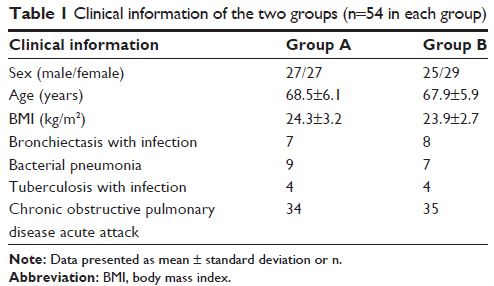108384
论文已发表
注册即可获取德孚的最新动态
IF 收录期刊
- 3.4 Breast Cancer (Dove Med Press)
- 3.2 Clin Epidemiol
- 2.6 Cancer Manag Res
- 2.9 Infect Drug Resist
- 3.7 Clin Interv Aging
- 5.1 Drug Des Dev Ther
- 3.1 Int J Chronic Obstr
- 6.6 Int J Nanomed
- 2.6 Int J Women's Health
- 2.9 Neuropsych Dis Treat
- 2.8 OncoTargets Ther
- 2.0 Patient Prefer Adher
- 2.2 Ther Clin Risk Manag
- 2.5 J Pain Res
- 3.0 Diabet Metab Synd Ob
- 3.2 Psychol Res Behav Ma
- 3.4 Nat Sci Sleep
- 1.8 Pharmgenomics Pers Med
- 2.0 Risk Manag Healthc Policy
- 4.1 J Inflamm Res
- 2.0 Int J Gen Med
- 3.4 J Hepatocell Carcinoma
- 3.0 J Asthma Allergy
- 2.2 Clin Cosmet Investig Dermatol
- 2.4 J Multidiscip Healthc

分别使用口服和静脉滴注左氧氟沙星 (Levofloxacin) 治疗中老年患者急性下呼吸道感染的成本效益分析
Authors Zhang L, Hu P
Received 8 November 2016
Accepted for publication 18 February 2017
Published 12 April 2017 Volume 2017:12 Pages 673—678
DOI https://doi.org/10.2147/CIA.S127009
Checked for plagiarism Yes
Review by Single-blind
Peer reviewers approved by Dr Akshita Wason
Peer reviewer comments 2
Editor who approved publication: Professor Zhi-Ying Wu
Aim: Pharmacoeconomic cost-effectiveness analysis of two different dosage
regimens of levofloxacin in the treatment of acute lower respiratory tract
infection in elderly patients.
Methods: A total of 108 elderly patients with
acute lower respiratory tract infection who visited by our hospital between
September 2013 and September 2014 were randomly divided into Group A and Group
B, with 54 patients in each group. In Group A, levofloxacin injection was given
for continuous intravenous infusion treatment, whereas in Group B, levofloxacin
injection and levofloxacin capsule were given as sequential therapy (ST). The
period of treatment for both the groups was 10 days, and minimum cost analysis
was used to analyze the treatment.
Results: Groups A and B had cure rates of 61.1% and 59.3% (P >0.05), effective rates of
88.9% and 83.3% (P >0.05),
bacterial clearance rates of 96.3% and 92.6% (P >0.05),
and incidence rates of adverse reactions of 7.4% and 3.7% (P >0.05), respectively.
Treatment costs of Groups A and B were 1,588 RMB and 1,150 RMB,
respectively, whereas the cost-effectiveness of the two groups was at 17.86 and
13.81, respectively (P <0.05).
Conclusion: Levofloxacin ST had relatively higher
cost-effectiveness ratio for the treatment of acute lower respiratory tract
infection in elderly patients, especially Chinese.
Keywords: Pharmacoeconomic, cost-effectiveness,
dosage, elderly patient, treatment cost, Chinese
